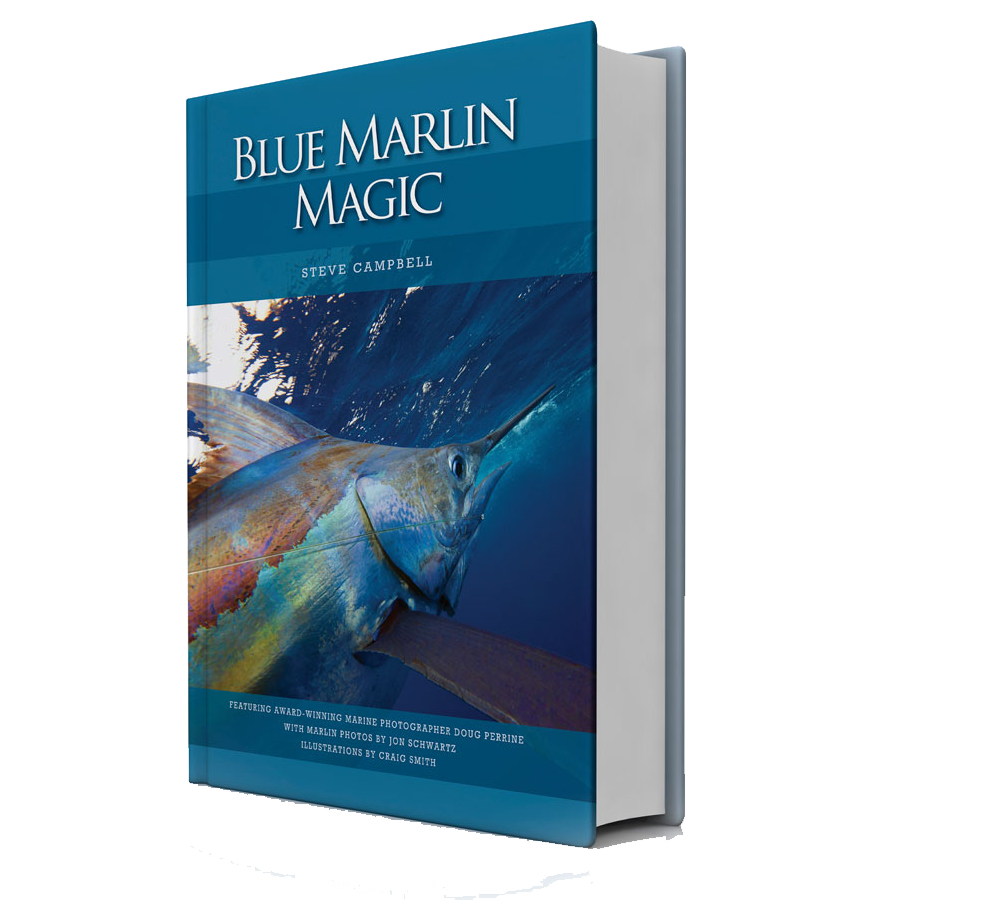Book Review: Blue Marlin Magic (Steve Campbell – author | Images, Photos & Illustrations by Doug Perrine, Jon Schwartz and Craig Smith)
By Mitchell A. Roffer, Ph.D. (President, Roffer’s Ocean Fishing Forecasting Service, Inc. – ROFFS™)
If you want to learn about blue marlin fishing and related science, as well as, read, view, study, imagine, plan and perhaps fantasize about visiting, fishing, and/or diving in the Kingdom of Tonga, a very blue paradise, then this is the book for you. It really does not matter if you fish in the Pacific Ocean, Indian Ocean or the Atlantic Ocean and surrounding seas, you will be able to transfer the knowledge gained from this book to your local fishing. This is a large sized, hard bound book with countless double paged glossy color photos taken by renowned photographers Doug Perrine (Hawaii), a former officemate at the University of Miami Rosenstiel School of Marine and Atmospheric Science (RSMAS), Jon Schwartz (California) and Kim Westerkov (New Zealand).
This is the book that will be well used on your family room table, office desk or the salon on the boat. Author Steve Campbell has put together what I consider a cross between a travel guide, fisheries oceanography text (with fishing research results) and fishing handbook. The visual presentation is what first caught my eye, but the information in the book makes it difficult to decide what the best aspect of the book is. Campbell is a well-known sport fishing captain in New Zealand and other locations in the South Pacific Ocean. He is the International Gamefish Association (IGFA) Representative for Tonga, an IGFA Ambassador Captain, an Executive Committee member of the Tonga International Gamefish Association (was President), operates the Ika Lahi International Game Fishing Lodge and is a strong advocate of conservation and tagging. Captain Campbell and his clients have caught more than 1,730 blue marlin, 96% were released earning him Tonga’s Top Billfish Captain for 14 consecutive seasons. But enough of the author and photographers.
I had difficulty deciding what to discuss first in this review: the photos of the ecosystem, the illustrations, research statistics, and fish behavior or the text that is partially a teaching guide and travel guide along with fishing stories. In summary, you get the three dimensional view of the blue marlin’s ecosystem in this book as the photos were taken from planes, boats and by divers below the ocean’s surface. I lost count on how many different species are shown from blue marlin to barracuda to sharks to humpback whales to manta rays to white terns and other birds. Want to see a photo of a trophy sized rusty jobfish? It is there among so many exacting photos of marlin, sailfish and other pelagic fish. The photographs are so clear you think that you are one taking the picture. The natural coloration of the fish is obvious.
[one_half]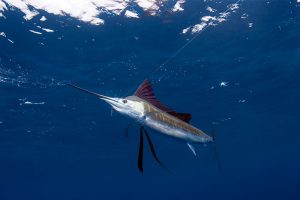 [/one_half] [one_half_last]
[/one_half] [one_half_last]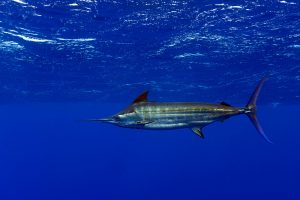 [/one_half_last]
[/one_half_last]
The text is divided into 20 chapters in addition to the various up front publisher’s notes, author’s foreword and introduction. For the student (early learner or experienced researcher) there is a 20 page bibliography, 28 pages of data, tables and scientific figures along with two pages of photographic index and credits, as well as, an index that is 17 pages. You can read this book in many ways. One is likely to start skimming through the text looking at the main subjects and photos, finding many subject area that generate interest and read a page here and there. But be warned, you will find yourself doing this over and over again. Others are likely to sit down and study the book from cover to cover. Again take note that to truly digest the information provided make sure you have a comfortable chair and plenty of time. I suggest that you have the ability to take notes unless you have a photographic memory as there are countless information bits and lessons to be learned. Trust me you do not want to be writing on these full sized color glossy pages. This book reads like a novel but contains a lifetime of fishing research, experience and knowledge.
Among the many subjects included in the text are reviews of the ecology of the blue marlin and other highly migratory fish, the local bottom topography, i.e. the Tonga Trench, fish aggregation devices, seamounts, fishing techniques of working structure, raising the fish, what records to keep that will help you catch more fish, strike and flight behavior, teasers, lure selection (with a chart showing data on success rates with each lure), hooks, and other terminal gear considerations, and preparation before leaving the dock. Don’t fret there are battle stories of fishing along with tournament guidance.
There is a special chapter by Scott P. Bannerot (Ph.D. RSMAS and classmate of mine), which includes the early life history, physiology, behavior, management and concern for the future survival of blue marlin. This includes migration behavior derived from satellite tagging work, as well as, population status.
I guarantee that the information provided in this wonderful book will be the subject of many conversations and emails with friends, relatives, and fishing partners. There are 580 large pages and more than 1000 photographs and original illustrations. It is also likely to make you start wondering how you can get your way to the Kingdom of Tonga to do some of your own “research.”
[one_half]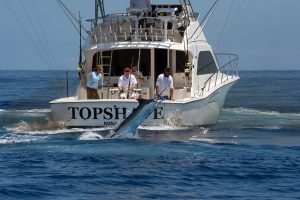 [/one_half] [one_half_last]
[/one_half] [one_half_last]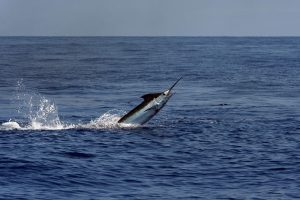 [/one_half_last]
[/one_half_last]
For my family, I am sure that we will be passing this book around the couch and on the dinner table (after it is cleaned) discussing in awe the photos of fish, the multi-hue blue waters, and the islands. The television and computer will go idle during these times as we will be debating fishing techniques. I am sure I will have to get a second copy for my office as the research information will be referenced over a long time.
This elaborate and colorful book is available for preview at www.bluemarlinmagic.com. Ordering information is there too. I assure you that you will want several of these for holiday gifts, birthday gifts or just gifts for the special people in your life. The standard edition is $100 per copy plus shipping. Well worth it as I have seen books at $300 or more that do not provide the enjoyment and information that his book does. You may even think about framing the jacket photo.
The bottom line for me is that this book is a keeper, as there are plenty of them out there to buy and enjoy.

